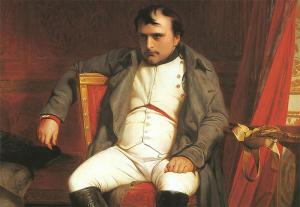A rare note written by a physician who treated the emperor Napoleon Bonaparte reveals the truth about the last years of his life suffering from illness and pain of the French military genius.
A letter dated June 4, 1818, written by surgeon Barry Edward O’Meara, who treated Napoleon while he was in exile on the island of St. Helena is far away in the South Atlantic.
Commenting on Napoleon’s “bad health” , the letter describes how the former French king had “experienced severe physical pain” , including headache, pain in his right hand, fever, and rapid heartbeat.

In the last years of his life, Napoleon suffered a lot of physical pain.
In the letter that was sold by the Texas Heritage Auction to an unnamed Briton for ,000, Dr O’Meara also revealed that he had to extract one of Napoleon’s left upper teeth after he ” tortured” by toothache.
According to historians, the French emperor and O’Meara were friends and later senior surgeons aboard the HMS Bellerophon when Napoleon surrendered in 1815 after his defeat at the Battle of Waterloo.
Napoleon asked O’Meara to be his doctor during his exile, historians say. The British government ordered the return of Dr. O’Meara in July 1818.
Napoleon, who ruled France for 15 years, died on the island of St. Helena in 1821 after a long battle with stomach cancer.
A Heritage Auctions spokesman said it was a rare letter and was “in excellent condition considering its age and journey”.
Sandra Palomino from Heritage Auctions said the ancient document provides “a fresh and unique look into the life of France’s great statesman and military leader, hence its historical importance. Its history cannot be underestimated”.
Interest in the military genius Napoleon remains great to this day. In 2019, archaeologists discovered a one-legged skeleton in Russia believed by historians to be one of his generals, Charles-Etienne Gudin.
A team of French and Russian archaeologists discovered the 200-year-old skeleton during an excavation in the Russian city of Smolensk, about 250 kilometers west of Moscow.
And in 2018, a hat attributed to Napoleon that was worn at the Battle of Waterloo sold for more than 0,000 at an auction in Lyon, France. The hat is believed to be one of about 120 military uniforms worn by Napoleon.

